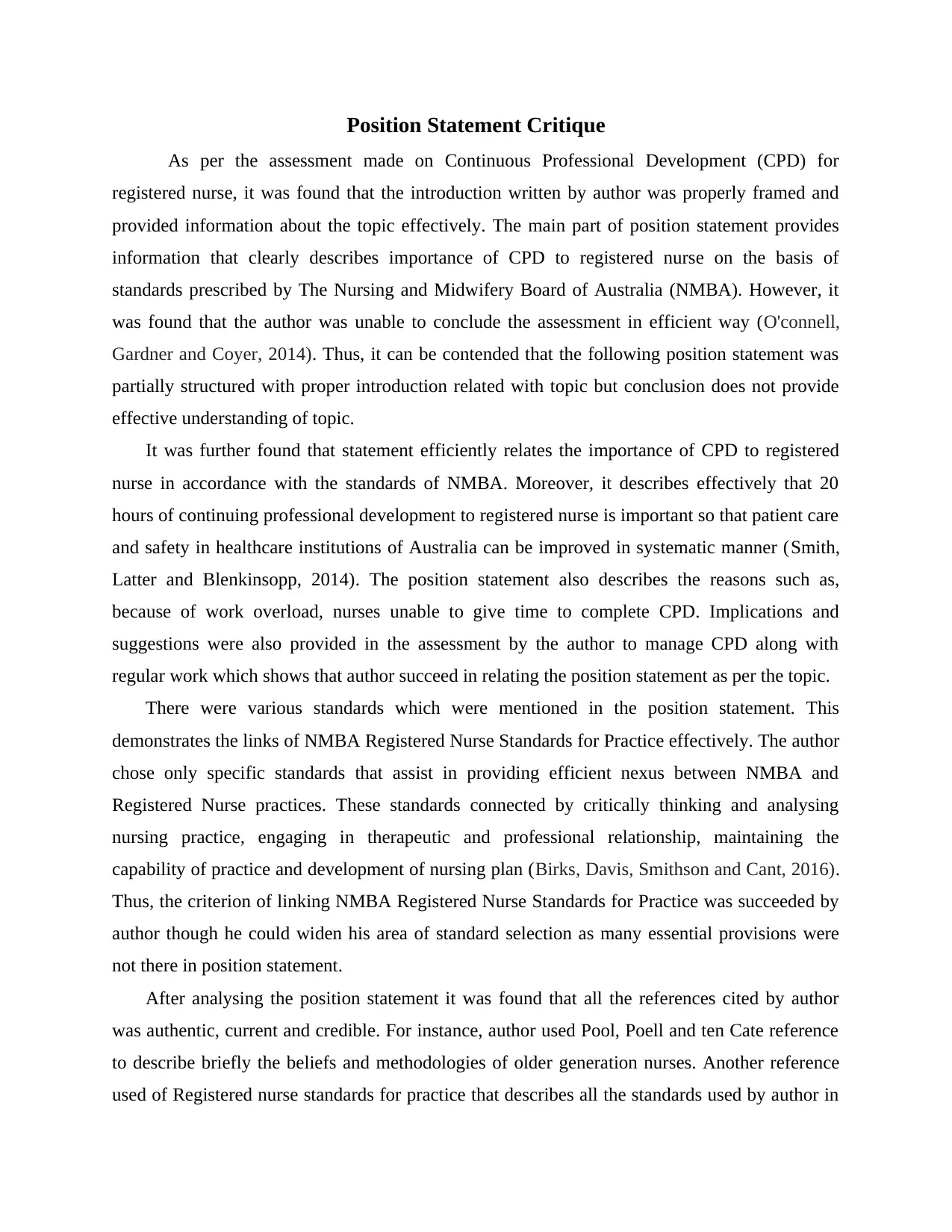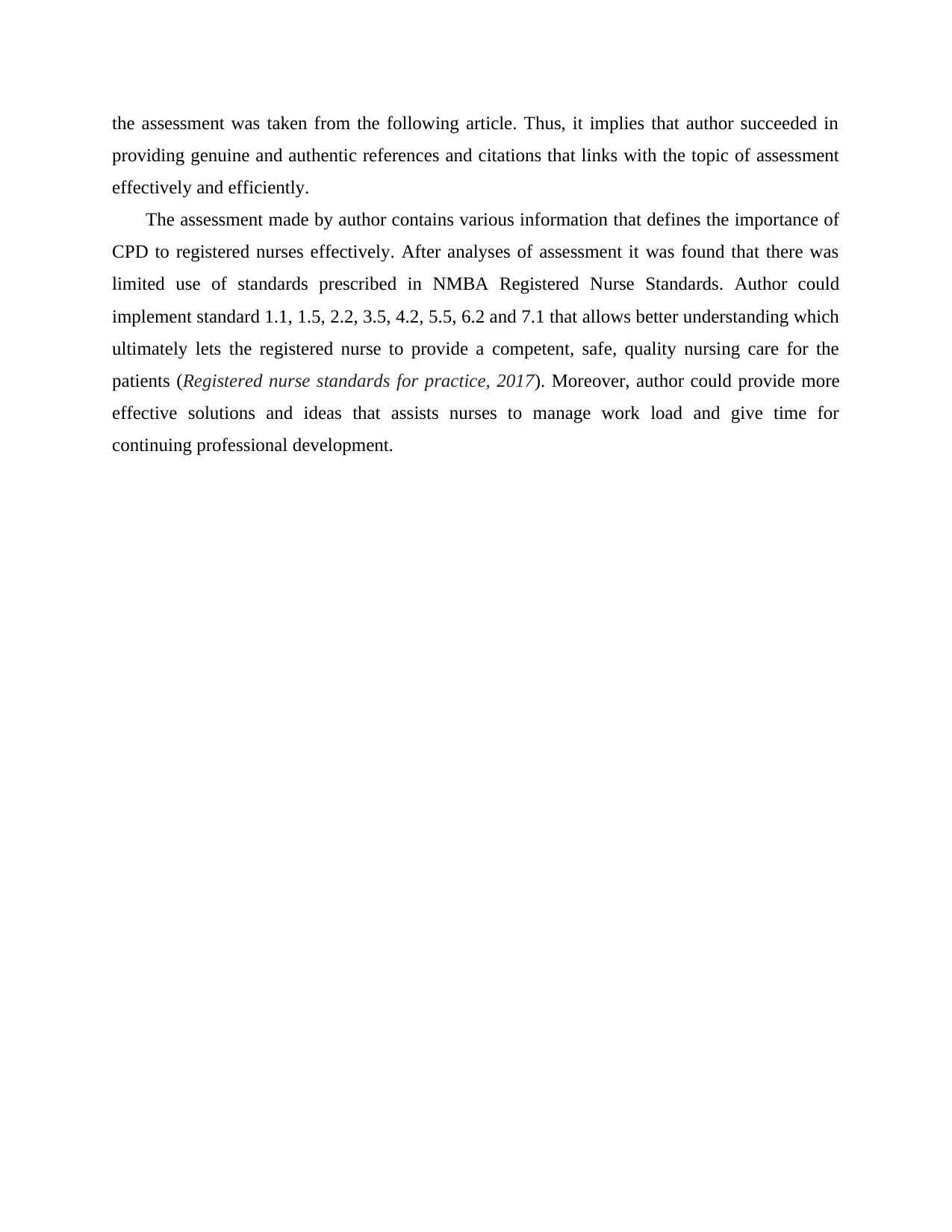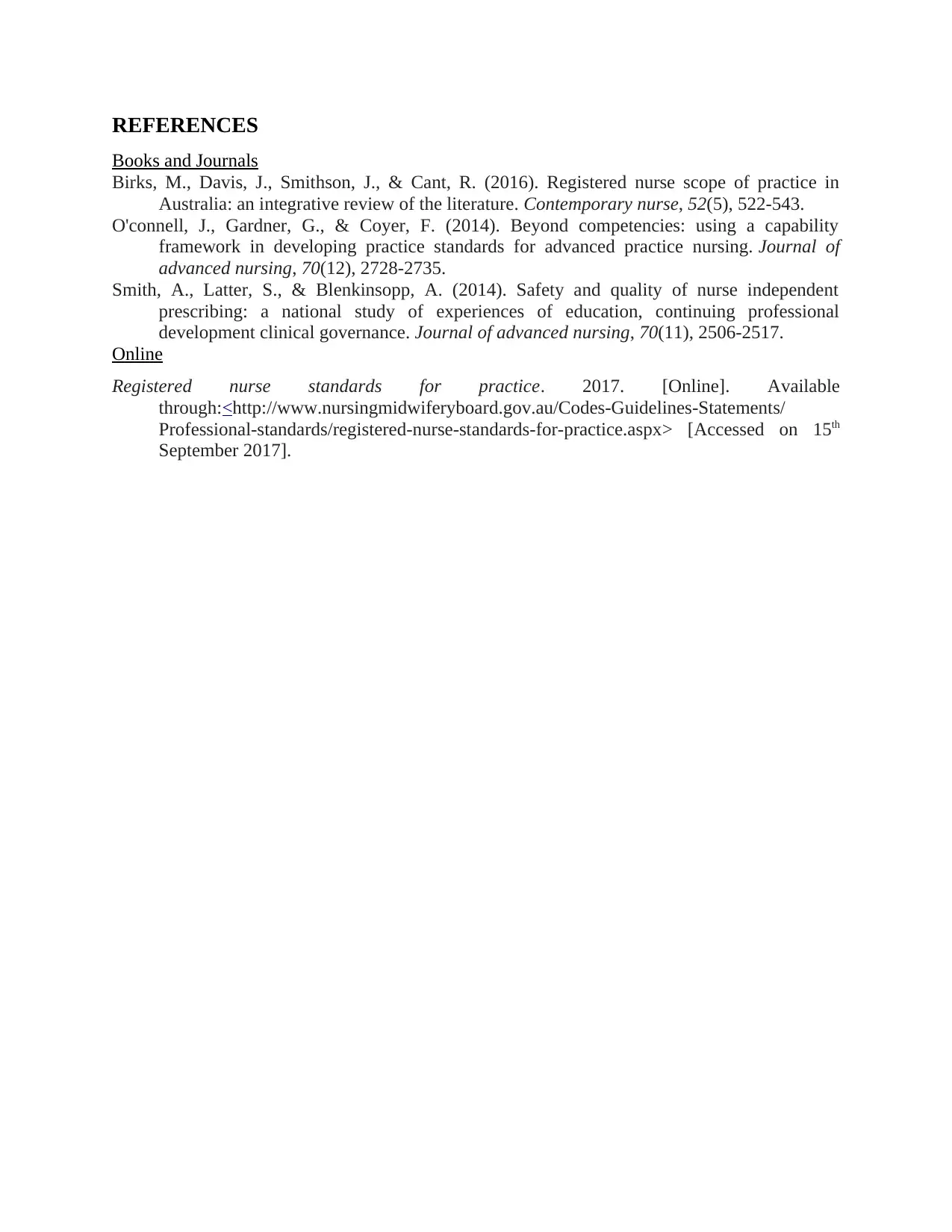Continuous Professional Development (CPD) Position Statement Critique
VerifiedAdded on 2020/06/04
|4
|768
|115
Essay
AI Summary
This essay provides a critique of a position statement on Continuous Professional Development (CPD) for registered nurses. The analysis assesses the introduction, main content, and conclusion of the statement, evaluating its effectiveness in conveying the importance of CPD based on the standards prescribed by The Nursing and Midwifery Board of Australia (NMBA). The essay highlights the strengths of the statement, such as its clear explanation of CPD's significance for nurses and its alignment with NMBA standards. However, it also points out areas for improvement, particularly in the conclusion and the scope of standards referenced. The assessment also covers the authenticity of the references used and suggests additional standards that could enhance the understanding of CPD's role in providing competent and safe patient care. The author used authentic references to support the arguments. Overall, the essay effectively evaluates the position statement's structure, content, and relevance to the topic of CPD for registered nurses.
1 out of 4











![[object Object]](/_next/static/media/star-bottom.7253800d.svg)